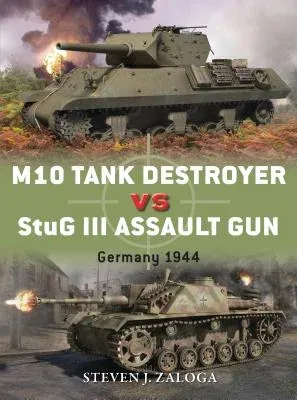Although tanks like the Sherman and Panther captured the headlines, the
Allies' M10 tank destroyer and the Germans' Sturmgeschütz (StuG) III
were the unsung workhorses of the northwest European battlefields of
1944-45. While their mission was not principally fighting one another,
their widespread use ensured their frequent encounters, from the
Normandy bocage to the rubble-strewn streets of Aachen.
The StuG III was the quintessential assault gun: a low-slung, heavily
armored, turretless vehicle intended to provide direct-fire support for
infantry formations. It was a jack of all trades, being used both for
the traditional direct-fire role, but also increasingly for antitank
defense; when its armament was improved from a short 75mm gun to the
better-known long 75mm gun, it reached its pinnacle and remained largely
unchanged from 1943 to 1945. It proved exceptionally valuable in
Normandy as its low profile and excellent armament made it a useful
infantry support weapon while at the same time it had more than adequate
firepower to destroy standard Allied tanks such as the Sherman.
The M10 3in Gun Motor Carriage was originally developed as a tank
destroyer. It was based on the Sherman tank chassis but with less armor
and a more powerful gun. By 1944, however, its 3in gun proved
ineffectual against the most thickly armored German tanks such as the
Panther and Tiger. As a result, by 1944, the US Army's M10 battalions
were usually deployed in support of US infantry divisions to conduct
direct-fire support. Essentially, the M10 became the US Army's principal
assault gun in the 1944-45 ETO campaign, whether intended for this role
or not.
Widely deployed in roles their designers had not envisaged, these two
armored fighting vehicles clashed repeatedly during the 11-month
campaign that saw the Allies advance from Normandy to the heart of the
Reich. Fully illustrated with specially commissioned artwork, this is
the story of their confrontation at the height of World War II.

